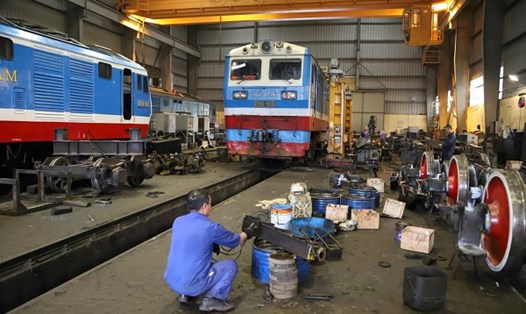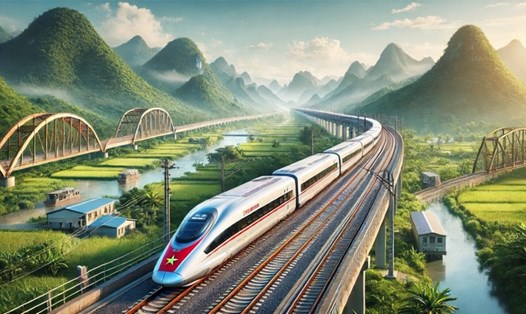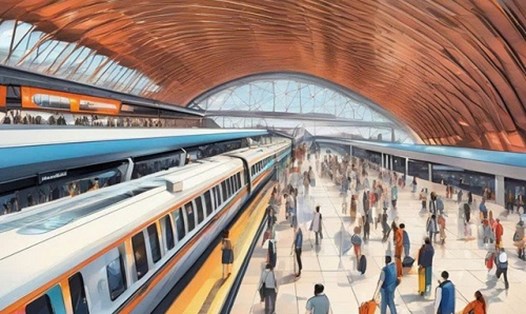Accordingly, to research the high-speed railway project, the Ministry of Transport studied the experience of 22 countries and territories that are exploiting it and 6 countries that are building it.
Through research, the Ministry of Transport has drawn 7 lessons for Vietnam as follows:
Firstly, in terms of railway development, countries basically go through 3 stages. Currently, Vietnam is in stage 2, while many countries in the world are in stage 3.
Second, in terms of geo-economic characteristics, countries with geo-economic forms concentrated in a number of strategic corridors or along vertical axes similar to Vietnam have all developed high-speed railways quite early to transport passengers, connect corridors, create momentum for socio-economic development, and ensure national defense and security.
Third, at the time of investment decision, countries do not have similarities in economic scale and per capita income when investing in high-speed railways.
However, according to research by the World Bank, this is the right time for Vietnam to invest in high-speed railways when the average income per capita in 2023 will reach 4,282 USD/person, much higher than many countries when deciding to invest in high-speed railways and is expected to reach 7,500 USD by 2030.
Fourth, regarding technology selection and design speed. Currently, there are three types of high-speed railway technology in the world: rail technology; magnetic levitation technology (Maglev); Hyperloop technology, of which rail technology is popular due to its reliability and efficiency.
According to 2023 statistics from the International Railway Association, the total length of high-speed railways with rail technology in operation worldwide is about 59,400km, expected to double within the next 30 years.
Regarding design speed, before 2010, the design speed ratio was mainly under 300km/h; from 2010 to present, the design speed ratio was mainly from 300km/h or more; recently, some projects have chosen a design speed of over 350km/h.
The investment cost for a speed of 350 km/h is about 8-9% higher than that for a speed of 250 km/h (infrastructure is about 7% higher; vehicles and equipment are about 17% higher).
However, if investing at a speed of 250km/h, upgrading to a speed of 350km/h is difficult to implement and ineffective.
Fifth, in terms of choosing transport functions, most countries with developed railway networks use existing railways to transport goods, and high-speed railways mainly transport passengers.
In case there are sea routes and waterways on the same corridor, transporting goods by combined sea and waterway is the most optimal.
The separate or joint exploitation of passenger and freight trains is decided on the basis of transportation needs, geo-economic conditions, and existing railway infrastructure, but basically high-speed railways mainly serve passenger transport, and can be combined with the transport of some goods that require fast transportation.
Sixth, regarding investment implementation, to successfully implement the project, countries all set goals with strong political determination at the highest level from institutionalizing legal regulations, mobilizing capital, training human resources, developing the railway industry and the decisions made all have a vision of up to hundreds of years.
High-speed railways bring great economic and social efficiency, but in terms of financial efficiency, it is impossible to recover capital from railway business, so countries basically invest in public.
Some countries and territories invested in the PPP method but were unsuccessful, had to nationalize (Italy, Spain), or had to increase state support to a very high level (Taiwan - China).
Seventh, regarding technology transfer, industrial development, and human resource training, countries all have national human resource and railway industry development programs to prepare for investment and development, in which the important basis for choosing the level of railway industry development is the market size and the level of industrial development.
In terms of technology, only 04 countries have developed and completely mastered it; 03 countries have received technology transfer and are moving towards mastery, these are all countries with developed industries; the remaining countries only receive technology transfer to master technology for maintenance and operation, produce some materials and spare parts, aiming to increase the localization rate and gradually master conventional railway technology.










